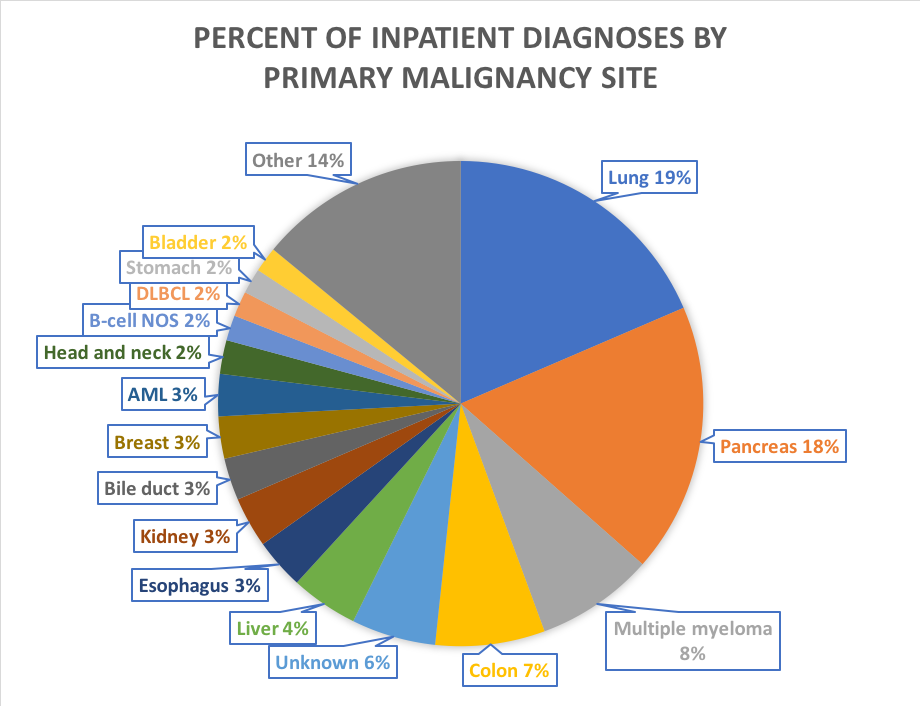Background: Cancer screening guidelines based on age, biological sex, and degree of risk are intended to diagnose malignancies early and in the outpatient setting. Despite these efforts, malignancies are often diagnosed while patients are admitted to the hospital. These diagnoses are made either incidentally or after the onset of a clinical condition that necessitates an admission, often to a hospital medicine service.
Methods: The internal clinical data warehouse of a major academic institution was queried for hospital admissions during the 13 months between September 1, 2014 and September 30, 2015. Individual hospital admissions were captured for patients who were discharged with an ICD-9 code related to malignancy that was not present in their chart on admission. Demographic information on each patient was collected, including age, biological sex, insurance type, and primary care physician. When available, information on the malignancy itself was collected, including histologic type and primary site.
Results: In querying for novel ICD-9 codes pertaining to malignancy, 813 individual admissions were captured. Upon manual analysis of each patient chart, 131 patients were identified as having been diagnosed with a malignancy while on an inpatient hospital medicine service. The most prevalent primary site was lung (33 patients, or 18.2% of novel diagnoses) followed by pancreas (32, or 17.7%), multiple myeloma (14, or 7.7%), colon (13, or 7.2%), and unknown primary site (10, or 5.5%). The remaining patients were diagnosed with malignancies from one of 32 additional primary sites or cancer types. Only 18% of patients diagnosed with primary lung cancer and 23% of patients diagnosed with colon cancer had listed primary care physicians.
Conclusions: This study identifies the most common primary malignancies diagnosed over a 13 month period in a major academic institution. Although cancer screening guidelines exist for lung and colon cancer, they do not exist for pancreatic cancer or multiple myeloma. Our findings should prompt renewed awareness of these diagnoses in inpatient internal medicine physicians and hospitalists. Additionally, our findings stress the importance of regular primary care screening for all malignancies with existing screening guidelines.

